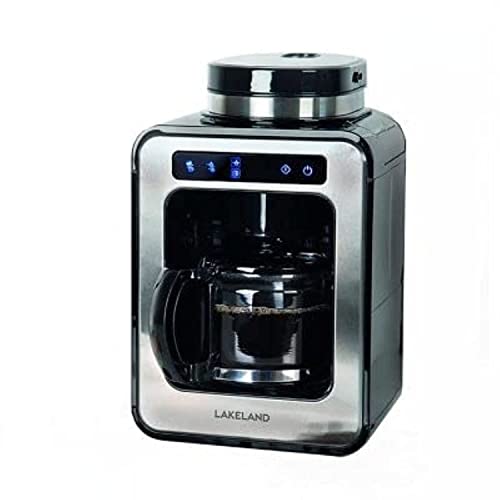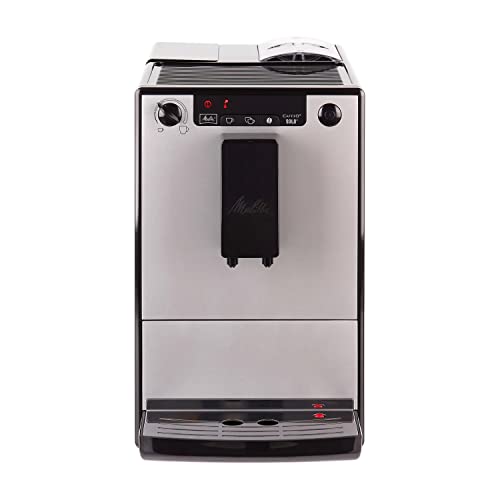Blog entry by Jacquetta Lowry
Bean-to-Cup Coffee Machines
 Bean-to-cup
coffee machines are great for those bleary-eyed Monday mornings
where you just want to press the button to get your daily dose of
caffeine. They provide a degree of flexibility to more
adventurous drinkers.
Bean-to-cup
coffee machines are great for those bleary-eyed Monday mornings
where you just want to press the button to get your daily dose of
caffeine. They provide a degree of flexibility to more
adventurous drinkers.
They are able to store whole beans in a hopper and then grinding them before brewing and dispensing drinks at the click of an button. They can serve both staff and customers, with out the need for a barista.
Cost-effectiveness
If you prefer the traditional flavor of freshly ground beans or the convenience of pre-packaged coffee pods, each type has pros and cons. Cost-effectiveness is the most important aspect. Bean-to-cup machines are more affordable for long-term usage than pod-based models. They can help you cut down on regular expenses by purchasing bulk premium beans that can be purchased at a cheaper price than pods. In addition, they can cut down on consumption by eliminating the need for reusable coffee pods.
Bean-to-cup coffee makers are a fantastic choice for offices due to the fact that they're easy to use. In contrast to manual drip-style coffee makers that require the user to grind beans and prepare them manually, bean-to-cup machines provide an easy, consistent coffee brew with the click of a button. They are designed to be low-maintenance and easy clean. Many come with built-in rinse programs and cleaning programs, making it easy to ensure they are running smoothly.
The most significant benefit of a Bean-to-Cup machine is its user-friendliness. It is generally easy to install and operate, Coffee bean machines and requires no previous knowledge to operate. It comes with a built-in frother and a grinder. This makes it perfect for small-sized businesses with small staff. Additionally, it offers high-quality coffee at the push of the button, which is ideal for offices that are busy.
Although it might be more expensive to purchase a bean-to-cup machine than a pod model, it will save money in the end by reducing the cost of supplies and lowering energy costs. It is also more environmentally sustainable than pod-based machines since it generates less waste and consumes less energy.
Offering coffee to your employees is an excellent way to boost productivity and morale. Installing a bean-to-cup cup machine in your breakroom, you will create a space that encourages collaboration and teamwork. In addition, it can encourage interaction between your employees by encouraging informal conversations. In these discussions employees can share their thoughts and find creative solutions to problems. A cup of coffee will provide a boost to your mental health and spark your imagination.
Convenience
Bean-to cup coffee machines are an affordable method of providing high-quality coffee with the push of an button. They are easy-to-use and require minimal maintenance. They have built-in grinders which ensure your beans are freshly ground for every cup. They can be programmed to create various drinks, including hot and iced drinks, by pressing a button. This lets you create various drinks for your employees and customers.
Additionally, a bean-to-cup coffee maker can let you save money by removing the need for paper filters and plastic cups. It also reduces the amount coffee grounds end in the trash. If you're concerned about the environment you can select a coffee machine that uses organic whole beans to provide a more sustainable experience.
Unlike pod coffee machines, which require a certain amount of proficiency to operate, a bean-to-cup machine can be operated by anyone who has little or no knowledge. The user is required to top off the water tank and automatic bean to cup coffee machines hopper prior to selecting the desired beverage from the machine's user-friendly control panel. Some coffee bean machines allow you to alter the strength and temperature.
The pod coffee machines utilize powdered, pre-ground coffee, the bean to cup coffee machine grinds whole beans prior making each cup of coffee. This helps to preserve the aroma and flavor of the beans, which results in a more authentic flavor and texture. They are also able to adapt each cup of coffee to its users' preferences, and learn their preferences throughout the day. Barista Smart is a great example of a machine that does this. It can be programmed for 21 different types, from espresso to black coffee.
A bean-to-cup coffee machine will also run a rinse cycle before it turns off and when first turned on. This will prevent residues from building up on the coffee spouts, or milk dispensers. It will also have an internal container for the leftover coffee grounds and milk. This bin does not need to be empty each day and is usually equipped with an indicator on the wall when it is full.
Freshness
Fresh-brewed coffee is not only delicious however, it also has many health benefits. It can increase metabolism, decrease the risk of heart disease, and give you an energy boost that is natural. It is essential to choose the most suitable beans for your machine. Select whole bean coffees that have a a clearly marked roast date to ensure the best quality and taste for your cup. This is essential for bean-to cup machines which require freshly roasted ground coffee beans. Using stale coffee beans could result in a lack of flavor and an unpleasant taste.
The shelf life of coffee beans depends on several factors, including storage conditions and temperature. When stored properly bags of unopened coffee beans can last for up to six months from the time of roasting. Once the beans are ground, their shelf-life decreases dramatically because of the increased surface area which exposes them to oxygen. It is generally recommended to use beans freshly ground within two weeks of opening or grinding.
The appearance of the beans can be another way to determine if your coffee maker bean to cup is fresh. Fresh whole beans will have a shiny appearance while older coffee beans will appear dull and dry. The aroma of the beans may aid in determining whether they are fresh or not.
When coffee beans are roasted, they release volatile aromatic oils that carry the flavor of the best bean to cup coffee machine coffee. These oils are the reason for the distinctive scent of each coffee and if they lose their potency, the taste of the coffee that is brewed will be affected. To avoid this, be sure you buy coffee beans with a clear roasting date. Also, keep them in an airtight jar.
It is also recommended that you grind the coffee a few days before brewing. This will help reduce the risk of oxidation and ensure that you get the best automatic bean to cup coffee machine flavor. To get the best home bean to cup coffee machine outcomes, do not store coffee beans that have been roasted in the freezer, which can cause structural damage and moisture accumulation.
The hopper is a crucial component of any bean to cup machine, and it must be cleaned regularly to eliminate excess water and dirt. Cleaning the hopper helps to prevent blockages and improve overall performance. It's as easy as getting rid of the hopper every day by washing it in hot water, then wiping the hopper with a soft cloth in order to remove any buildup or dust.
Sustainability
Whether you drink your coffee from a instant cup, a filter, or a single-serving capsule the most sustainable option is to buy beans that are grown and processed sustainably. By choosing sustainable brands or buying beans that are UTZ or fair trade certified, you will avoid the waste created during the roasting and packaging processes. These certifications ensure that the farmers who grow the beans receive adequate wages, and that they have adequate working conditions.
The production of coffee beans is the primary source of greenhouse gas emissions which ranges from 40% to 80% of a cup of coffee's total environmental impact. This is because large companies use intensive irrigation, fertilizers, as well as pesticides to boost the yield of their crops. This causes deforestation, pollutes water sources, and kills a variety of species. It also causes soil erosion that causes climate change and a degradation of the soil.
If you select a bean-to cup machine, you can minimize the carbon footprint of your coffee by eliminating the requirement for paper cups as well as plastic pods. You can go one step further and share the machine with a coworker to cut down on the amount of energy it takes to make your morning coffee. Another option to reduce your coffee's environmental impact is to buy a sustainable refillable pod that is able to be used several times.
 Espresso
machines are more efficient today due to the increasing attention
to sustainability. Many consume less electricity. A few of them
are made from recycled materials, and you can even find ones that
are 100 percent compostable. They'll be biomaterials in 84 days
of being disposed. You can avoid adding to the problem of waste
by encouraging your colleagues to use reusable mugs or tumblers,
and also by offering the composting of coffee grounds. You can
also assist by donating to charities that work to promote
sustainable coffee production. Lastly, you can also reduce your
carbon footprint by avoiding items that are used only once like
stirrers and sugar.
Espresso
machines are more efficient today due to the increasing attention
to sustainability. Many consume less electricity. A few of them
are made from recycled materials, and you can even find ones that
are 100 percent compostable. They'll be biomaterials in 84 days
of being disposed. You can avoid adding to the problem of waste
by encouraging your colleagues to use reusable mugs or tumblers,
and also by offering the composting of coffee grounds. You can
also assist by donating to charities that work to promote
sustainable coffee production. Lastly, you can also reduce your
carbon footprint by avoiding items that are used only once like
stirrers and sugar.
